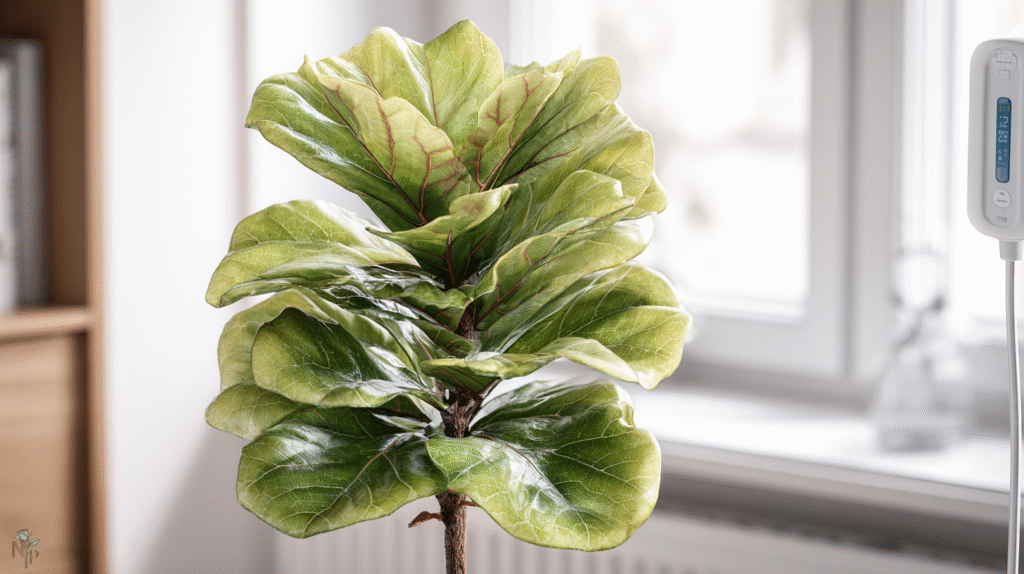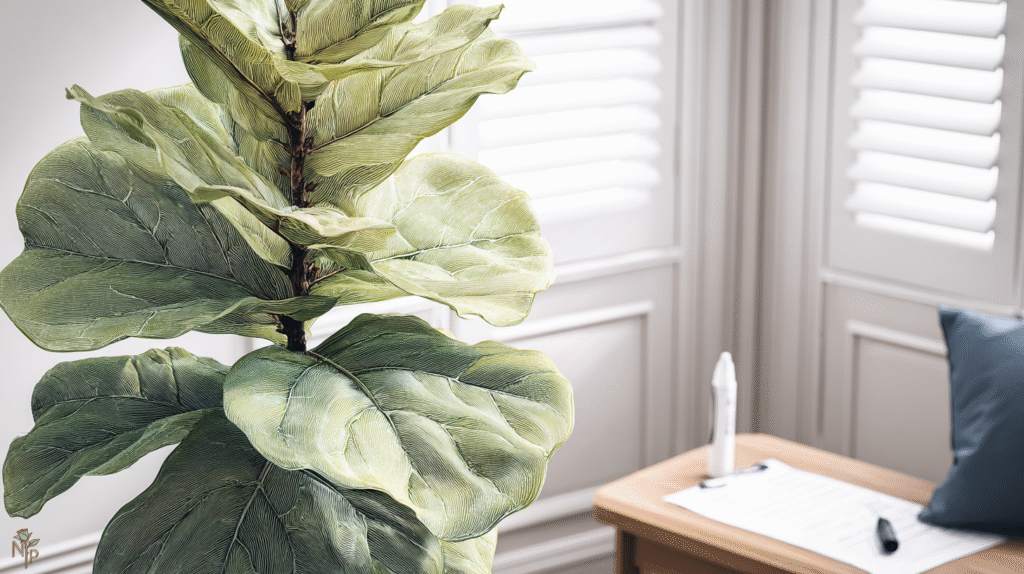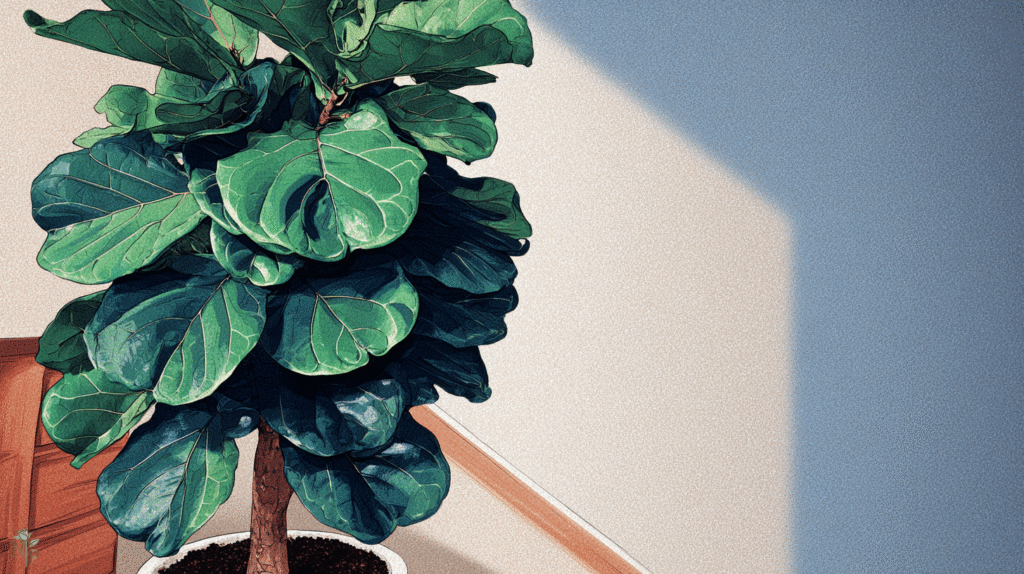My fiddle leaf fig cost $140. One hundred and forty dollars for a plant. I justified it as “living art” and promised myself I’d keep it pristine. Six months later, it had exactly three new leaves (all different sizes), brown spots everywhere, and was leaning like it was drunk.
Turns out I was basically starving it while simultaneously giving it fertilizer burn. Yeah, I didn’t know that was possible either.
See, I’d read that fiddle leafs were “sensitive to fertilizer” so I barely fed it. Then I’d panic about the lack of growth and dump a bunch of plant food on it. Then the leaves would get brown edges and I’d stop feeding it entirely. This cycle went on for two years. Two years of the world’s most expensive stick figure.
Now, three years and approximately $80 worth of different fertilizers later (yes, I kept the receipts because I hate myself), I finally have a fiddle that’s actually growing. Like, a new leaf every month growing. Leaves bigger than my head growing. Here’s everything I learned about feeding these divas, including which expensive fertilizers are total BS and what actually works.
The Numbers Game Nobody Explains Properly
Every fertilizer has three numbers like 3-1-2 or 10-10-10. For two years, I had no idea what these meant. Just grabbed whatever said “houseplant fertilizer” and hoped for the best.
Here’s what those numbers actually mean for your fiddle: First number (nitrogen) = leaf growth. Second number (phosphorus) = roots and overall health. Third number (potassium) = disease resistance and stem strength.
Fiddles want more nitrogen because they’re all about those big leaves. But not too much or you’ll burn them. After trying every ratio imaginable, 3-1-2 works best. It’s enough nitrogen for growth without being so strong it burns those sensitive roots.
I learned this after using 20-20-20 orchid fertilizer (because I had it lying around) and watching my fiddle’s leaves develop brown edges within a week. Too strong. Way too strong.

Liquid vs Granular vs Sticks (Spoiler: Sticks Suck)
Liquid fertilizer:
This is what I use now. Dilute it, water with it, done. Even distribution, no hot spots, easy to control strength. I use Dyna-Gro Foliage Pro after trying six different brands. It’s like $15 for a bottle that lasts a year.
Started with Miracle-Gro because it’s everywhere. Worked okay but my fiddle grew slowly and the leaves were pale. Switched to the Dyna-Gro and the difference was obvious within a month – darker green leaves, faster growth, no burned edges.
Granular fertilizer:
Tried this thinking it would be easier. Just sprinkle and forget, right? Wrong. Creates pockets of concentrated fertilizer that burn roots. Plus, fiddles have sensitive surface roots that granular fertilizer can damage. Lost a bunch of lower leaves learning this lesson.
Fertilizer sticks:
The biggest scam in plant care. They claim to feed for months but really just create super concentrated spots that burn roots while leaving other areas unfed. Paid $12 for “fiddle leaf fig specific” sticks. Within two weeks, the leaves near where I’d placed the sticks had brown spots. The other side of the plant stayed pale and stopped growing. Never again.
The Schedule That Actually Works
Everyone says “fertilize in growing season.” Cool, but when’s that exactly? And how much? How often?
Took me forever to figure out a schedule that promotes growth without burning. Here’s what works:
March through September: Every other watering with liquid fertilizer at HALF strength. Not full strength like the bottle says. Half. Learned this after following package directions and watching my fiddle develop crispy brown patches on every single leaf.
So if I water weekly in summer, it gets fertilizer every two weeks. If the bottle says 1 teaspoon per gallon, I use 1/2 teaspoon. Fiddles are sensitive. Treat them like they’re allergic to everything.
October through February: Once a month at quarter strength. Some people say don’t fertilize in winter at all. Tried that. My fiddle dropped three leaves and looked depressed. Light feeding in winter keeps it stable even if it’s not actively growing.
The Specialty Fertilizer Scam
Let me save you some money. “Fiddle Leaf Fig Plant Food” for $30 a bottle? It’s just regular fertilizer in fancy packaging. I bought three different “specially formulated” fiddle fertilizers. Compared the ingredients to regular houseplant fertilizer. Nearly identical, just 3x the price.
The only specialty product that’s actually different is SUPERthrive. It’s not fertilizer, it’s vitamins and hormones. Smells like a barn and stains everything yellow. But holy hell does it work. I add one drop (ONE DROP, this stuff is concentrated) per gallon once a month. My fiddle grew three inches in a month after I started using it.
But here’s the thing – you still need regular fertilizer. SUPERthrive is like vitamins, not food. Using only SUPERthrive is like trying to live on Flintstone vitamins. Doesn’t work.

Signs You’re Screwing Up (I’ve Made All of These)
Brown edges on leaves: Too much fertilizer or fertilizing dry soil. Always water first, then fertilize. Learned this after burning an entire new leaf that came out looking like someone took a lighter to the edges.
Pale new growth: Not enough fertilizer. New leaves should be bright green. If they’re pale or yellowish, your fiddle is hungry. Bump up the feeding schedule.
Dark green leaves but no growth: Too much nitrogen, not enough other nutrients. This happened when I used lawn fertilizer (30-0-4) thinking “nitrogen = growth.” Nope. Leaves were super dark but no new growth for months.
Red/brown spots on leaves: Could be fertilizer burn from too strong concentration. Or you got fertilizer on the leaves. I’m messy and splash fertilizer water on leaves all the time. Now I wipe them off immediately or they develop spots.
The Water Quality Plot Twist
Used tap water for two years. Fertilized perfectly. Fiddle still struggled. Then I read that fluoride and chlorine in tap water can prevent nutrient absorption. Switched to filtered water. Game changer.
My fiddle went from growing a leaf every two months to monthly. Same fertilizer, same schedule, just filtered water. Annoying? Yes. Worth it? For a $140 plant, absolutely.
If you’re too lazy for filtered water (no judgment), at least let tap water sit out overnight. Some of the chlorine evaporates. Better than nothing.
Seasonal Adjustments Nobody Mentions
Summer fiddles are hungry beasts. Mine grows like crazy June through August. I bump up to 3/4 strength fertilizer during peak summer because it’s actually using all those nutrients.
Winter is different. Even with grow lights, my fiddle basically hibernates December through February. Quarter-strength monthly is plenty. Any more and the fertilizer just builds up in the soil since the plant isn’t really using it.
Spring is when things get exciting. March hits and suddenly my fiddle wakes up hungry. First sign of new growth, I go back to half-strength every other watering. You can literally see the growth accelerate.
My Current Routine That Keeps It Happy
After all the expensive mistakes, here’s my simple system:
Basic feeding:
- Dyna-Gro Foliage Pro, half strength, every other watering March-September
- Quarter strength monthly October-February
- SUPERthrive (1 drop per gallon) once a month year-round
Application method:
- Water first with plain water until it drains
- Wait 30 minutes
- Water again with fertilizer solution
- Wipe any splashes off leaves immediately
The game-changers:
- Filtered water always
- Never fertilize dry soil
- Less is more – underfed fiddles grow slowly, overfed fiddles die

The Bottom Line on Fiddle Fertilizer
Three years ago, I thought my fiddle’s problems were from pests, or light, or humidity, or whatever. Spent money on humidifiers, grow lights, neem oil. The problem was I was alternating between starving and burning it with fertilizer.
Now it’s almost touching my ceiling and I need to figure out what to do when it gets too tall. Good problem to have after years of it being an expensive stick with brown spots.
Don’t overthink it. Get a basic liquid fertilizer with 3-1-2 ratio, dilute it way more than you think, and be consistent. Your fiddle doesn’t need special food, it just needs regular food at the right strength. Save that $30 specialty fertilizer money for your next plant. Because once your fiddle starts growing, you’ll want more plants. Trust me.






